

Tidal Exchange

Testing the Waters

Water Quality & Conservation Science
Elkhorn Slough is amazing for the richness and diversity of its wildlife and habitat. Southern sea otters, Santa Cruz long-toed salamanders, Western snowy plovers — all depend on the wetlands of Elkhorn Slough. e surrounding lands host rich native habitat, including maritime chaparral, coastal grasslands, oak woodlands and tidal marsh. But one of the most remarkable aspects of Elkhorn Slough could easily pass unnoticed: the role science plays in protecting this dynamic landscape.
As part of the National Estuarine Research Reserve system (NERR), one of the objectives of this Reserve is to conduct scienti c research and monitoring of wetlands. e monitoring performed by our researchers and volunteers is extensive including bird, amphibian, and invertebrate species. e data collected by our researchers helps guide our stewardship e orts, as well as the Reserve’s educational programs for youth and adults. One of the longest running and perhaps most complicated and important monitoring programs is that of water quality.




On a foggy Tuesday morning, Reserve researchers head down toward South Marsh, one of two dozen stations where they collect monthly data and water samples. John Haskins, Reserve Water Quality Scientist, retrieves a metal cylinder just under a meter long from the water. is humble tube is actually a highly sophisticated instrument called a sonde — a submersible computer and sensor array that records a variety of water quality measurements, including temperature, depth, conductivity, salinity, pH, turbidity, and dissolved oxygen.
“At four stations along the main channel, we have sondes permanently in the water, uploading readings
Wildlife, like the brown pelican above (photo by Jacqueline Deely), depends on the water quality of the slough. A researcher (inset) measures water quality using a sonde.
Elkhorn Slough Foundation
Board of Directors
Judith Connor
President
Anne Olsen
Vice President
C. Michael Pinto
Treasurer
Robert Hartmann
Secretary
Steven Webster Past President
Ed Boutonnet
Terry Eckhardt
Steve Green
Kent Marshall
Anne Secker
Tom Williams
Mary Wright
Mark Silberstein
Executive Director

Warriner’s Outlook

e mission of the Elkhorn Slough Foundation is to conserve and restore Elkhorn Slough and its watershed.
We see Elkhorn Slough and its watershed protected forever— a working landscape, where people, farming, industry, and nature thrive together. As one of California’s last great coastal wetlands, Elkhorn Slough will remain a wellspring of life and a source of inspiration for generations to come
PO Box 267, Moss Landing California 95039
tel: (831) 728-5939
fax: (831) 728-7031 www.elkhornslough.org
Tidal Exchange
Scott Nichols, Editor
Slough

Last year, when John Warriner passed away, we said goodbye to a good friend, avid naturalist, and dedicated conservationist. John and his wife, Ricky, organized the annual bird counts in the Elkhorn Slough watershed and volunteered thousands of hours banding and tracking the Western snowy plovers that nest along the sandy beaches of Monterey Bay and the old salt ponds of Elkhorn Slough. e Warriners’ contributions have had a lasting impact on the recovery of the endangered shorebirds — inspiring collaborations like the Moss Landing State Beach Dune Restoration project, a joint e ort of State Parks and the Elkhorn Slough Foundation.
For those of us who love Elkhorn Slough, John le an incomparable legacy. In addition to being a founding board member and enduring supporter of the Elkhorn Slough Foundation, John directed a one million dollar bequest to the Foundation’s endowment, supporting conservation of the slough and its watershed for future generations.
To commemorate John’s generosity and lifelong dedication to the Elkhorn Slough, ESF’s board of directors has named a scenic knoll at Brothers Ranch “Warriner’s Outlook” in his honor. is is the rst time the Foundation has bestowed such a honor and we feel it is tting recognition for John’s — and the entire Warriner family’s — role in protecting Elkhorn Slough.
John’s outlook — his optimism, big picture thinking, and long-range vision — were assets to the Foundation, an inspiration to everyone who had the good fortune to know him, and a legacy to all who enjoy the beauty and wildlife of Elkhorn Slough and its watershed. ■
ESF founders (le to right) Warren Church, Anne Frassetto Olsen, and John Warriner. (Not shown: Lou Calcagno and the late Don Bussey)
Night at the Slough

AFTER HOURS IN THE ECOTONE
e slough comes alive at night — and not just with the nocturnal wildlife you might expect to nd stirring in the wee hours, like owls, bats, and skunks. A variety of slough animals use the boundary between wetland and upland habitat (also known as an ecotone) as a corridor to move about, especially at night.

Wondering whether these animals have measurable e ects on the health or composition of plant communities in the ecotone, Reserve scientists devised an experiment.

ey fenced o small experimental plots within the ecotone to exclude wildlife, preventing animals from trampling or grazing these sections. Similar, unfenced areas were designated as control plots, in which animals are free to move and feed.




en, the researchers placed an array of “trip cameras” at various elevations to record how the animals use the ecotone. By combining data from the research plots and the cameras, scientists hope to get a better picture of how wildlife use and a ect the area where marsh and upland habitats meet.
eir ndings could help guide management decisions. And while the experiment is in progress, we get a fringe bene t: a sneak peak at the nightlife of Elkhorn Slough. ■


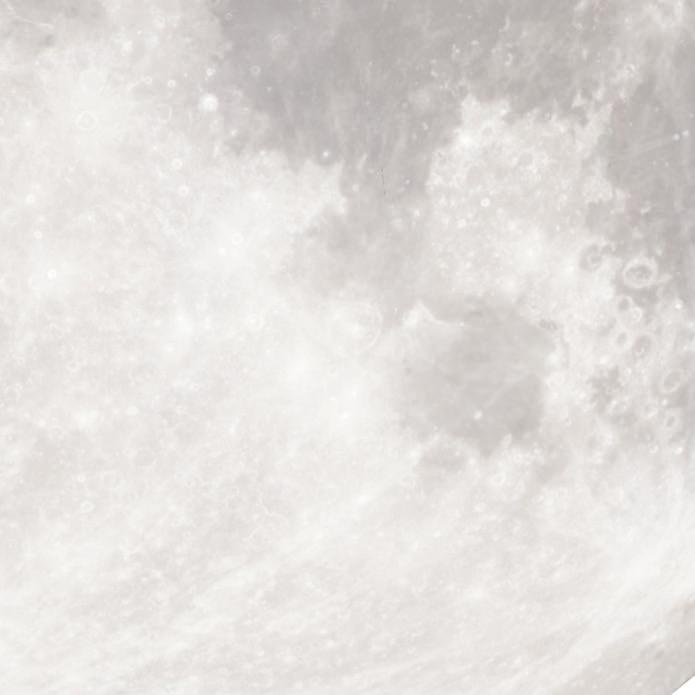

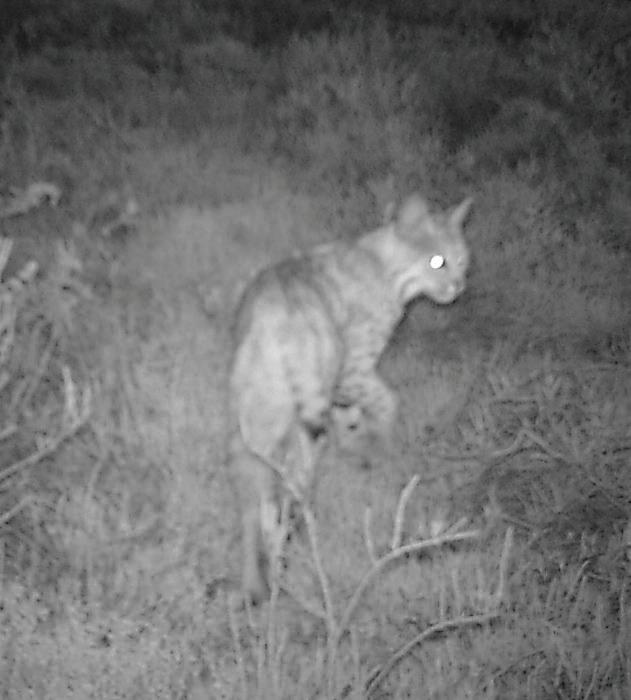
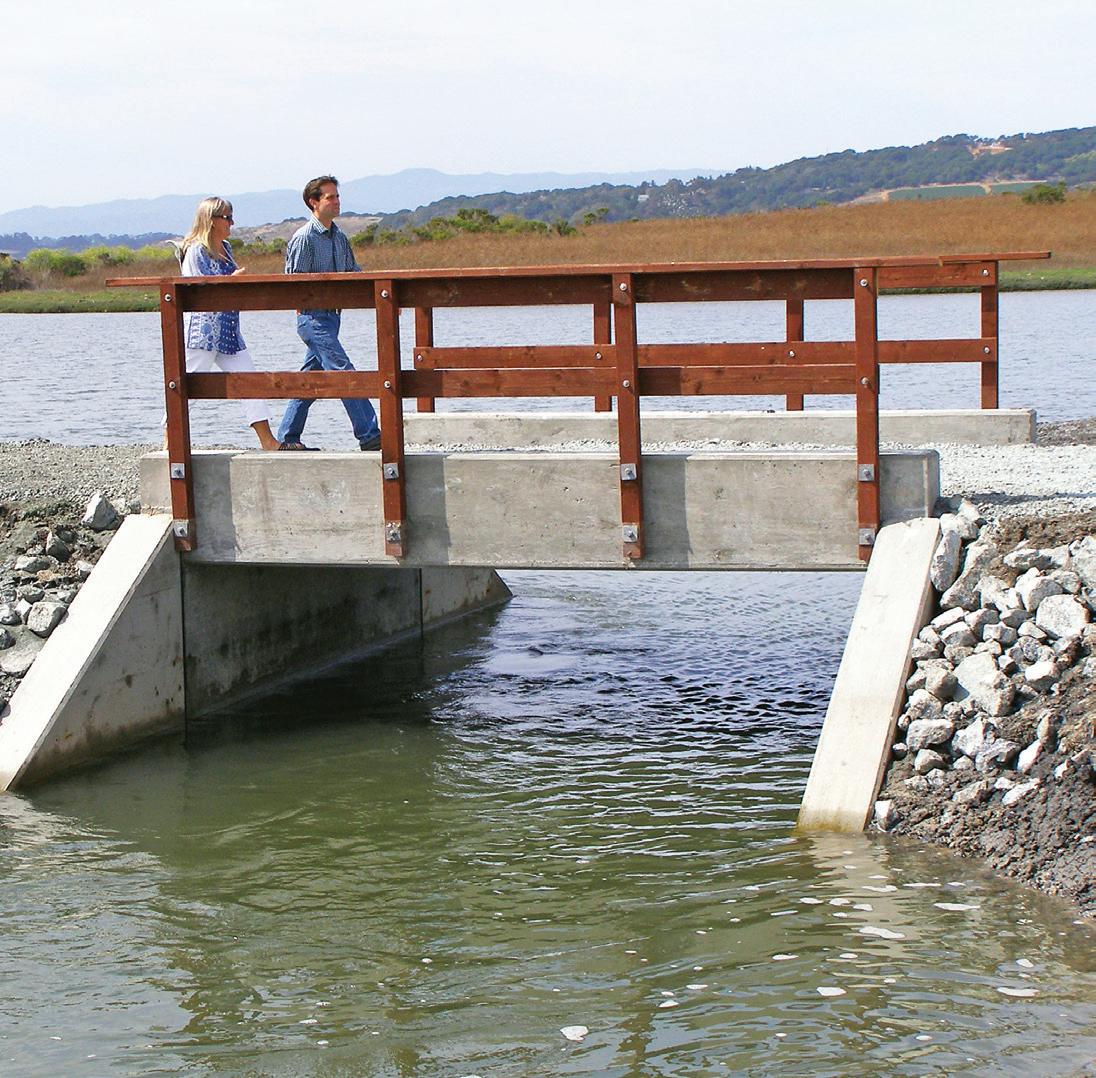

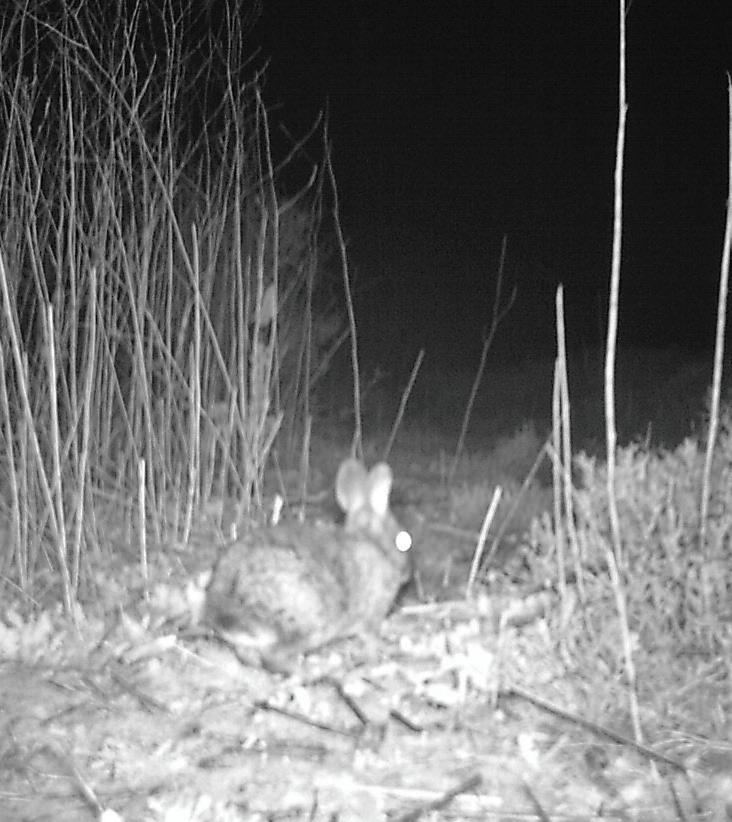
Our cameras have spotted a variety of critters roaming the transitional area between marsh and grassland — including (clockwise from top) deer, rabbits, bobcats, and raccoons.
Walking Whistlestop
Just a few months ago, the trail atop the Whistlestop levee was riddled with potholes, and severely degraded culverts were limiting the movement of water and wildlife into and out of the lagoon.
e repaired levee o ers visitors a safe trail to Hummingbird Island, increases tidal exchange at Whistlestop Lagoon (which should bene t water quality), and enhances access for aquatic wildlife between the lagoon and tidal channels of the slough.
Renovation of the Whistlestop Levee is complete, but the trail will be closed for a short time in mid-August for a few nishing touches. If you’re planning a walk to Hummingbird Island, please check www.elkhornslough.org for current trail closures and conditions. ■
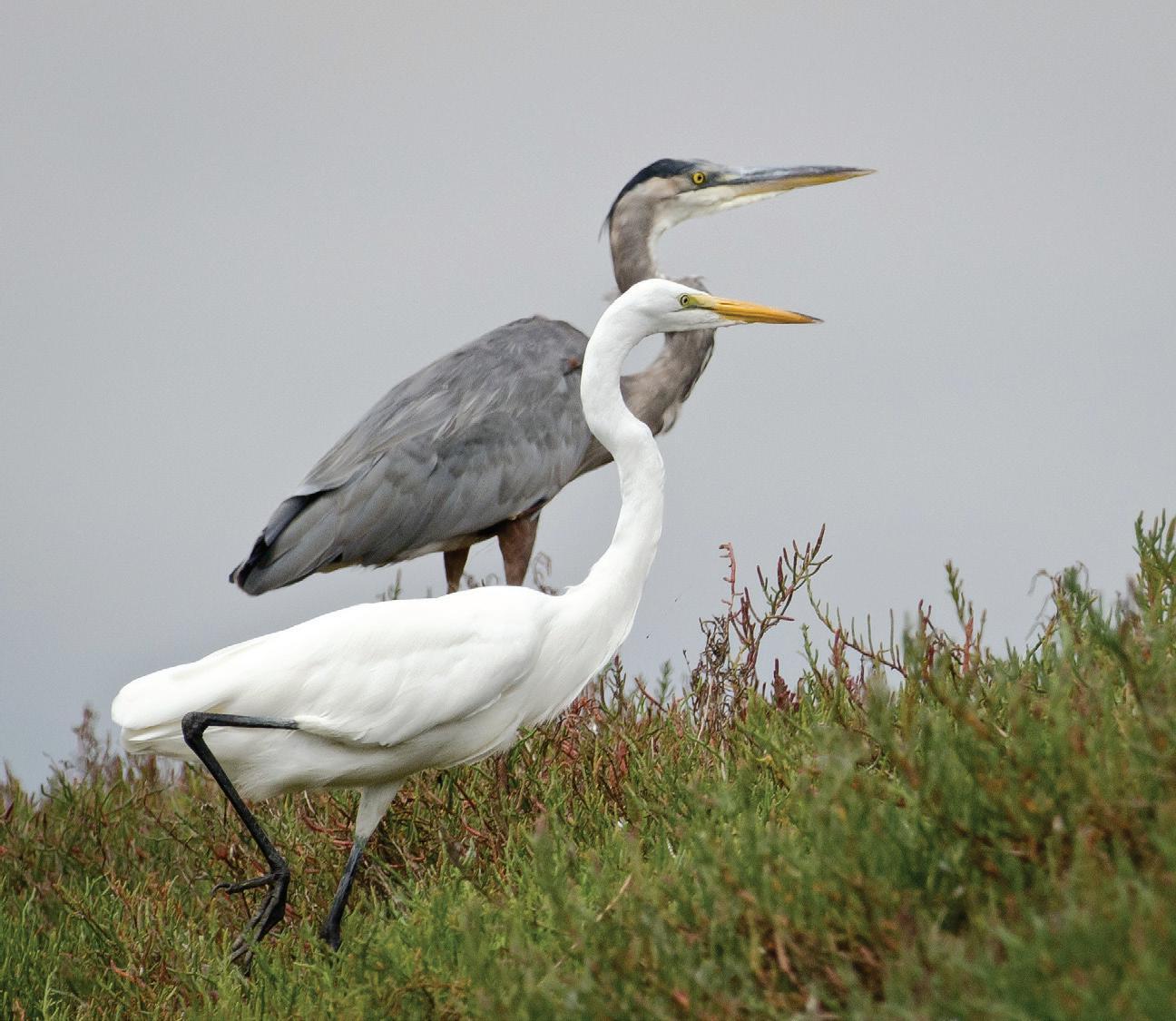
For the Birds…
Whether it's the raucous squawking of egrets in the rookery or the melodious trills of tiny songbirds, Elkhorn Slough is rich with the sights and sounds of avian life. Over 340 species of resident and migratory birds have been found at Elkhorn Slough over the years, prompting e National Audubon Society to list the slough as a Globally Important Bird Area and the Western Hemisphere Shorebird Reserve Network to designate it a Site of Regional Importance.
From rookery counts to waterbird surveys to nest box monitoring, Reserve researchers and specially trained volunteers have been meticulously observing and counting the birds of Elkhorn Slough for decades. By recording their diversity, abundance, and edging success, conservation scientists monitor trends in the health and composition of bird life in the slough.
With so many birds to enjoy, why not plan a visit? Our website, www.elkhornslough.org, features a guide describing the best birding spots at the slough, and our Sightings blog, sightings.elkhornslough.org, lists birds and wildlife seen recently at the Reserve.
Better yet, learn from the expert birders who lead Early Bird tours at the Reserve on the rst Saturday of every month at 8:30am. Or register for an upcoming birding walk on lands conserved by Elkhorn Slough Foundation, also led by expert birders.
We look forward to birding with you soon! ■
Water Quality
(Continued from front cover)
to the online NERR database at 30-minute intervals, 24/7,” John explains. “Every month, we also collect water samples and readings at 24 locations throughout the slough, to be analyzed for nutrient and algae levels.” ere are decades of water quality data from multiple locations throughout the Elkhorn Slough estuary. Knowing the importance of water quality for healthy habitats and wildlife, ESF Executive Director Mark Silberstein helped implement reliable monitoring stations and sampling protocols that have resulted in consistent water quality measurements since 1988.
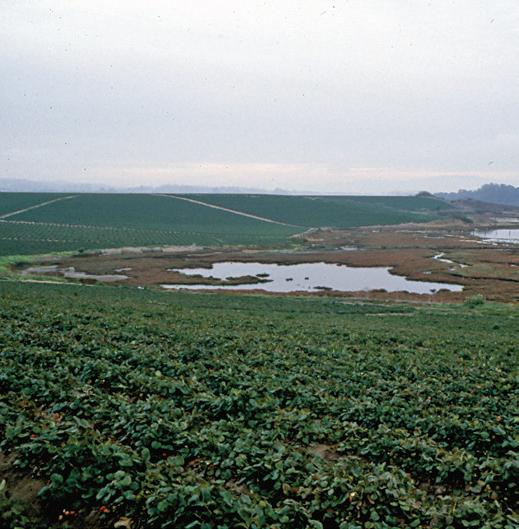

With these long-term data, researchers can analyze water quality for a variety of information in a number of di erent manners. And as we work to conserve land around Elkhorn Slough, we draw on water quality data to re ne our strategies for land stewardship and restoration.
“In general, we’ve learned that water quality is best in the main channel near the mouth of the slough, where strong tidal action ushes away excess nutrients and replenishes oxygen that sustains animal life,” says Mark. ese data show water quality tends to be poorest where tidal in uence is muted, for example in the Upper Slough and behind arti cial
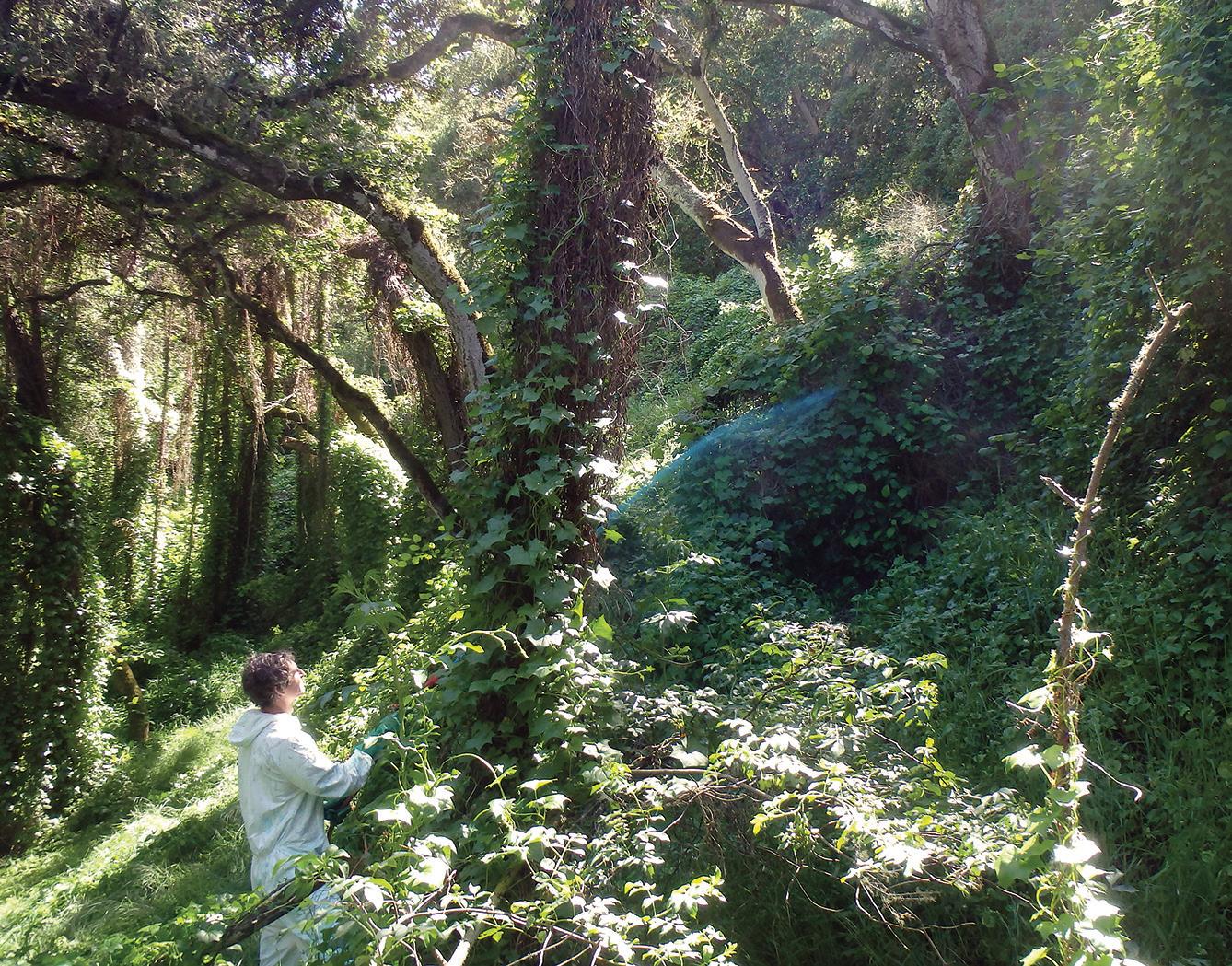
Great blue heron and great egret, photo by Ronnie Goyette

e objective is to improve the water quality and the data re ected in our water quality monitoring will indicate if this achieved.
“We have a lot of work ahead of us, but we’re making progress,” says Mark.



Before, strawberries at Azvedo were planted right up to the water’s edge — and beyond, into the slough. Excess soil and fertilizers from the elds washed into ponds adjoining the estuary. A er restoration, native habitat creates a bu er to capture nutrient runo .
structures that restrict the movement of water and trap nutrients from runo .
With this in mind, our stewardship e orts focus on reducing polluted runo , restoring native habitat, and enhancing tidal circulation. is work has included successfully developing a bu er zone between working farmlands and salt marsh in a heavily impacted area of the Upper Slough.
“Our studies have shown that wetland restoration and improved management of water control structures can enhance water quality and the health of the estuary,” says Reserve Research Coordinator Kerstin Wasson.
At the Reserve, at sites like Whistlestop Lagoon, culverts and levees have been redesigned to allow the tides to ebb and ow more freely. (Story on page 3)
Battling the Ivy Invasion
e Foundation’s land stewardship team has embarked on a multi-year project to eradicate an infestation of highly invasive Cape ivy — categorized as “high priority” by the California Invasive Plant Council (Cal-IPC) — from seven acres of coast live oak woodland on our Porter Ranch property.
Cape ivy grows in clusters of dense vines that choke out underlying vegetation and climb the trunks of trees. It can overtake the trees and even pull them down. is
All of us can help improve water quality through simple actions such as reducing the use of fertilizers, maintaining septic systems, and disposing of contaminants properly. e Elkhorn Slough Foundation has converted its farm lands to organic production — one step to reducing chemical inputs to the slough.
Of course, supporting the Elkhorn Slough Foundation is another way you can help, too. Your membership contributions support our science-based land conservation and habitat restoration, which help protect the slough. ■



Reserve researchers have compiled a bilingual Elkhorn Slough Water Quality Report Card, which will be distributed to visitors and the community through local businesses and at the Reserve Visitor Center. This report, and more information, is available at our website: www.elkhornslough. org/reportcard.
invasive weed is extremely di cult to remove without harming desirable plants growing in its midst.
Earlier this summer, we treated the ivy infestation with spray herbicide; in following months, we will revisit the area and perform spot application where needed. A er the Cape ivy has been eliminated, continued monitoring will be required, and we look forward to the time when we see native oak woodland understory plant growth — such as ferns — being reestablished. is project is stewardship work at its best. ■
Elkhorn Slough & You!
THE LES STRNAD AWARD FOR YOUNG CONSERVATIONISTS
e “Elkhorn Slough Foundation Conservation Education Scholarship for e Les Strnad Award” honors Les Strnad’s contributions to local science education and wetland conservation. In addition to helping establish the Elkhorn Slough National Estuarine Research Reserve, Les co-founded Camp SEA Lab, a program that fosters excitement, scienti c understanding, and stewardship of our coasts and ocean for youth, families and teachers. is year, ESF awarded scholarships for ten students to attend Camp SEA Lab’s “Elkhorn Slough and You!” summer camp program. In this week-long day camp, students hike and kayak, see plankton under a microscope, experience up-close encounters with woodland and marine life, and help restore habitat. We hope that these young people will share their discoveries with friends and family, and encourage stewardship of Elkhorn Slough and its watershed — a lasting tribute to Les and his work to protect the slough for future generations. ■
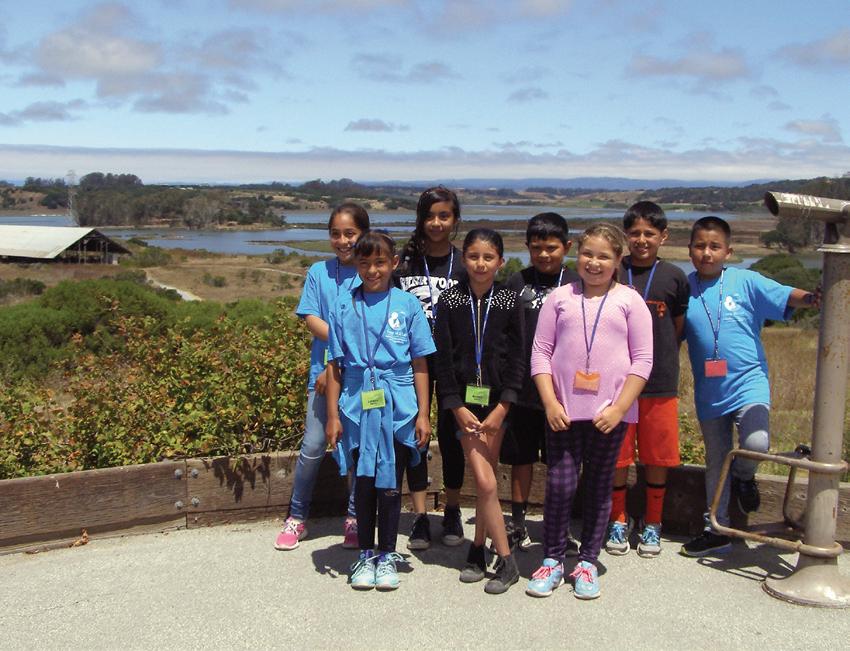


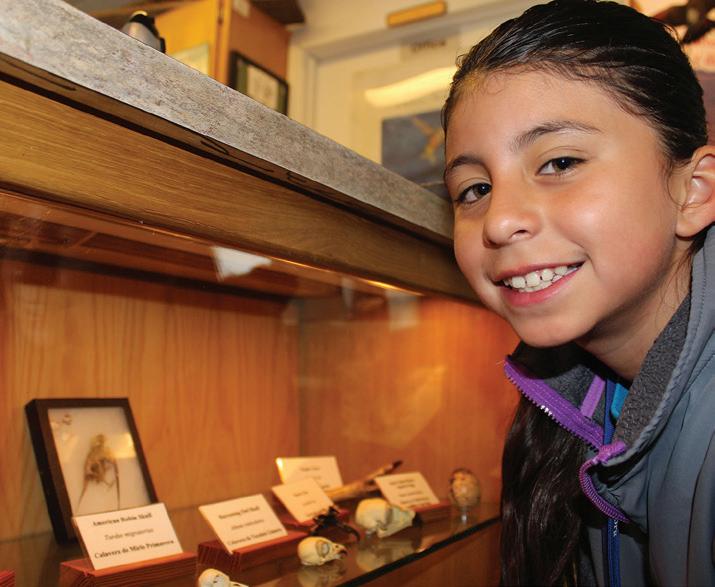
e intrepid campers who participated in Camp SEA Lab’s “Elkhorn Slough & You!” program explored the estuary by land, water — and microscope. For most, this was their rst visit to the slough.
MEMBER PROFILE:
Joey and Michele Madrigal
Gilroy residents Joey and Michele Madrigal became ESF members a er reading about the Moss Landing State Beach dune restoration project in the news. e next week, the couple volunteered to plant native seedlings, helping restore habitat for threatened Western snowy plovers.
“Monterey Bay is a place we really love,” says Michele. “We honeymooned here. Just a few minutes from home and we’re hanging out by the ocean.”
Michele teaches high school English, and Joey, a 6th generation Santa Clara County native, started his own business, Go Ride motorcycle products. Together, they plan to continue supporting land stewardship in the watershed.
“As an avid motorcyclist, I tour natural wonders all over the country," says Joey. “By volunteering at Elkhorn Slough, we’re helping protect wild places in our own backyard for people to enjoy.”
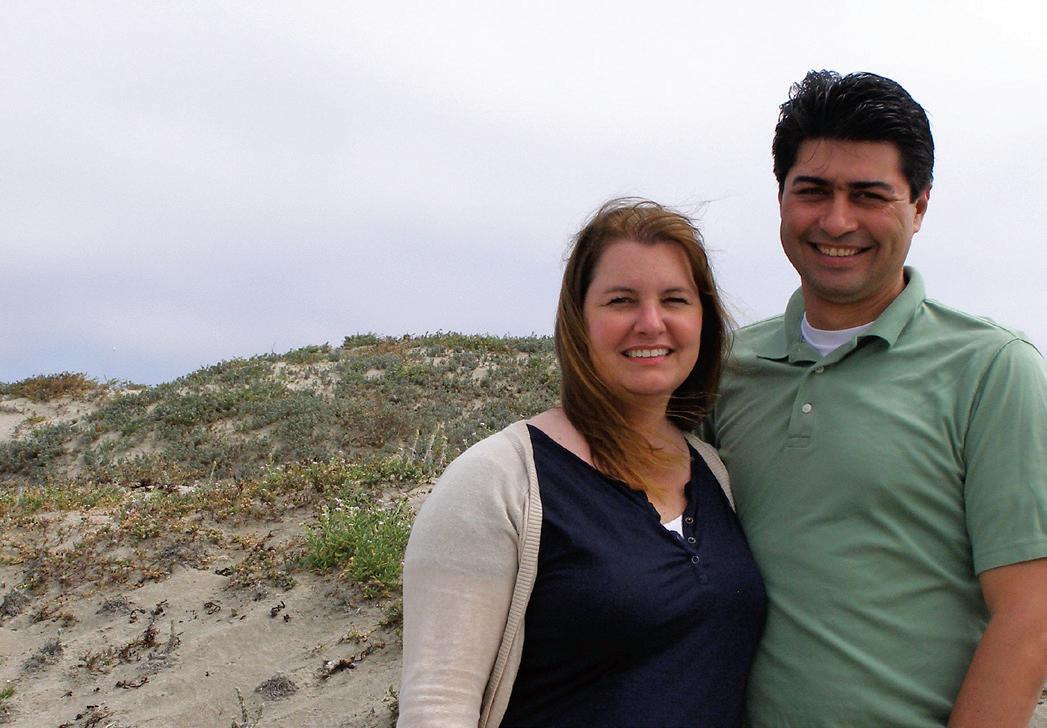

A few months a er the community planting, Joey and Michele attended a Foundation event, “ e Secret Life of Snowies,” and were impressed by the e ort devoted to monitoring each generation of the tiny shorebirds.
“As beach-goers and dog owners, it was also helpful to learn about when and why restrictions are in place to prevent disturbances to sensitive habitat and wildlife,” adds Michele. A timely reminder — Western snowy plover nesting season runs through September 30! ■
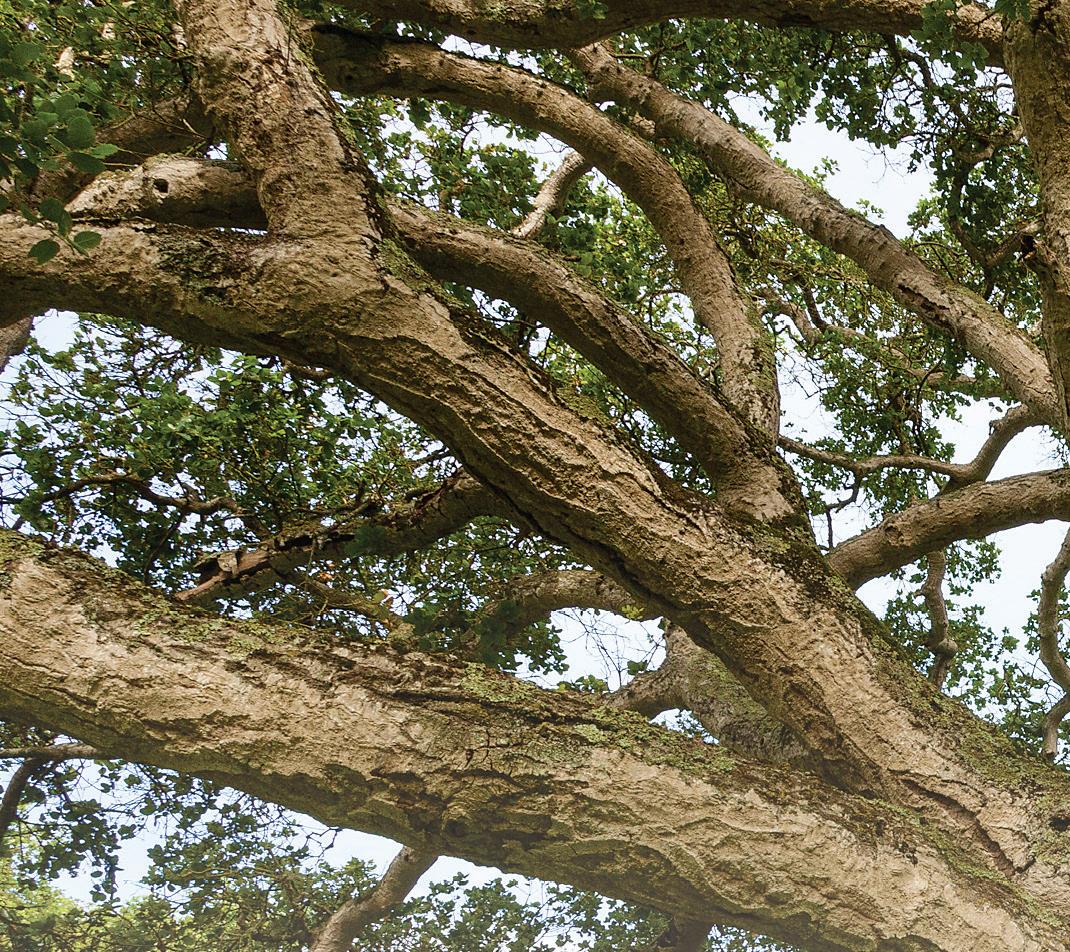



A Sense of Place
Judith
ESF Board President

From the easternmost edge of Carneros Creek to the deep Monterey Submarine Canyon o shore, the Elkhorn Slough watershed provides my sense of place, my community, and my livelihood. Home is a redwood cabin built 130 years ago between the Pajaro and Salinas Valleys. e farmers who preceded me on this land felled the native oaks, cleared the land for grazing cattle, and planted apricots, grapes, and apples here. Some of those aged trees and vines endure, as does the imprint of invasive species that were introduced: Vinca, Eucalyptus, Pampas grass — each adept at out-competing the native vegetation I treasure.
A few miles west, the land surrounding Elkhorn Slough provides a visible testament to 30 years of e orts to restore and preserve native plants and habitats. e Elkhorn Slough Foundation now protects 4,000 acres of conservation land here, preserving a network of natural communities that includes coastal marshes, freshwater wetlands, a restored riparian forest in the lower creek, and upland ridges of maritime chaparral.
Kim Hayes, Stewardship Director for the Foundation, inspires me to hike the steep slopes above the slough. A responsible guardian of the land, Kim can take pride in the restoration of precipitous, sandy hills, the tons of trash removed, the gullies and erosion reduced, and the sweeps of Pampas grass removed. She points out native grasses regaining a hold, a rare patch of tarplant, a splash of lupine blue, and young oak trees.
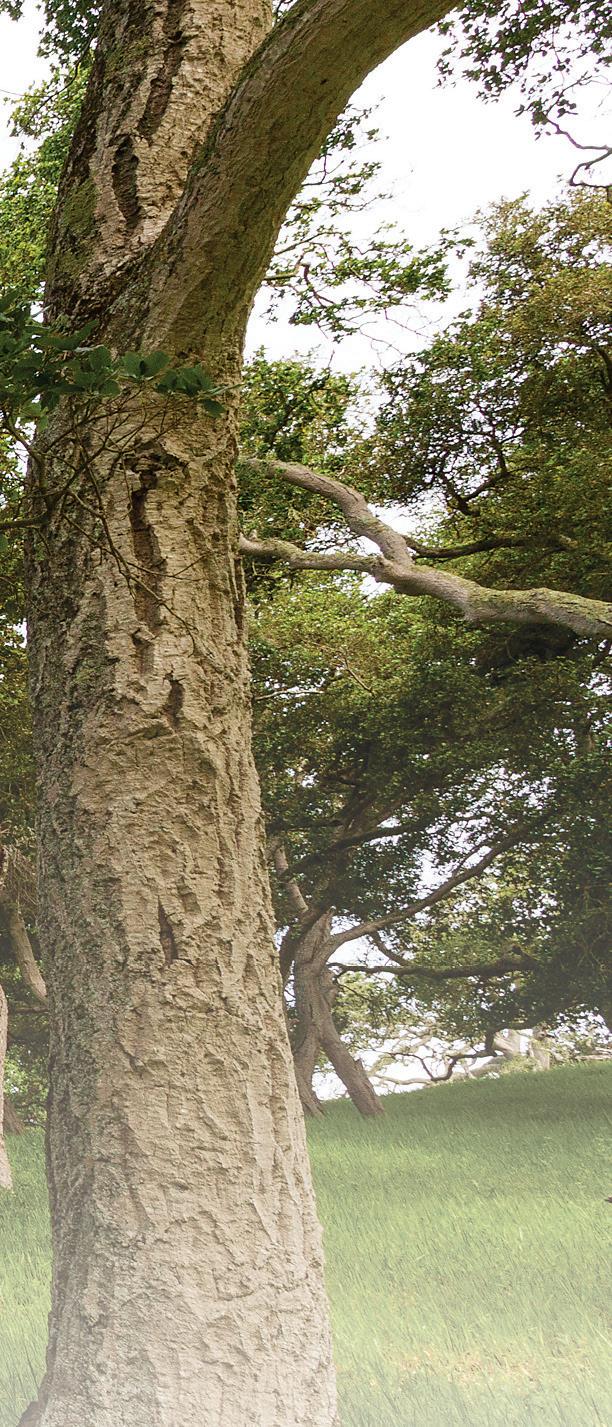
With Kim as my model, I’ve been motivated to excavate invasive blackberry brambles in the watershed. Now I beg her for additional names of the worst exotic vegetation I should tackle. She’s thoughtful in selecting from her least-wanted list: Eucalyptus, Cape ivy, perennial pepperweed, hoary cress, French broom, and ice plant. Armed with a 24-pound weed wrench, I choose to sweep out Genista monspessulana, French broom!
Surrounded by uprooted bushes with tiny yellow owers, I anticipate my return in rainy season to attack broom seedlings as they emerge from the soil. Why should we care? We care because this watershed bears the biological and geological history and future of our region. From the depths of Monterey Canyon to the highlands surrounding Elkhorn Slough, the landscape holds a wealth of diversity, awaiting our discovery and stewardship. Join us as we read and weed, hike and kayak toward a sense of place in this rare survivor of California’s original wetlands. ■
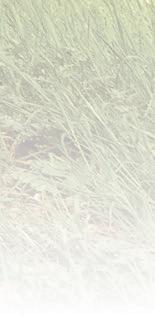

Judith Connor is the new President of the Foundation’s Board of Directors. Connor, who works as Director of Information and Technology Dissemination at Monterey Bay Aquarium Research Institute (MBARI), has served on ESF’s board for 5 years. For much of that time, Connor has chaired our Land Committee. She is a resident of the Elkhorn Slough watershed, with strong interests in native habitat restoration and invasive species management.
slough view
Connor,
Elkhorn Slough Foundation
P.O. Box 267
Moss Landing, CA 95039
The Elkhorn Slough Reserve is open Wednesday through Sunday, 9 am to 5 pm. Join us for docent-led tours every Saturday and Sunday at 0 am and pm .
SAVE THE DATES: Join us for our upcoming events. For more information, call 83 .728.5939 or visit www.elkhornslough.org.
• Saturday, September 20: Cleanup Day
• Saturday, September 27: Open House & Native Plant Fair at the Reserve, celebrating National Estuaries Day
Please watch our website and follow us on Facebook for updates on upcoming events, including kayaking tours, birding walks, and more!



Hooray, photographers!
ESF is accepting submissions for the 2015 Elkhorn Slough Calendar Photo Contest through September 30, 2014. For details, visit www.elkhornslough.org!
I‘m ready for my closeup!
Southern sea otter, photo by Efren Adalem
